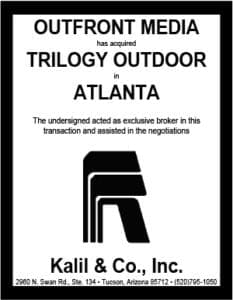

By Julia Cramer, Adomni Content Specialist
Synopsis: Education will fuel the adoption of DOOH and allow advertisers and agencies to fully understand the potential this medium holds.
The digital out-of-home (DOOH) industry has been rapidly evolving primarily due to the pandemic, which revved the adoption of programmatic capabilities. Advertisers can now utilize the flexible, dynamic, highly-targeted, and measurable medium to reach audiences at optimal times that echos ads that meet a consumer’s specific demands and mindset. Also, DOOH can be seamlessly activated and optimized across other digital channels – becoming an increasingly important component of the omnichannel marketing plan.
Yet, many digital advertisers overlook the vast benefits offered by DOOH advertising. According to PQ Media’s research, as of 2019, DOOH accounted for only 28.3% of OOH ad spend, and 6% of the global ad spend. Why? Advertisers are hesitant to incorporate DOOH into their marketing mix due to their lack of knowledge.
IAB and PwC conducted a study finding that 95% of participants interviewed identified education as one of the main barriers to adopting pDOOH. On the one hand, strategists, agency planners, and programmatic-trading teams aren’t mindful of the capabilities and benefits of a one-to-many buying approach and how DOOH can bring substantial worth to the clients. Similarly, OOH media owners and buyers are not necessarily equipped with programmatic knowledge and familiarity with real-time bidding.
DPAA and Xaxis partnered with Advertiser Perceptions, surveying digital marketers and agency experts in the United States who make omnichannel digital media buying decisions. Their research found a lack of fluency with programmatic and data-driven capabilities. Nearly half of the advertisers were unaware that DOOH sellers could provide information on the number of people in their target audience who passed DOOH screens. And almost two-thirds didn’t realize they could link exposure to DOOH screens to other media channels such as mobile, online, or TV.
That same study found a substantial correlation between education and DOOH recommendation. 81% of ad buyers recommended DOOH next year; that number increased to 91% for those with significant or moderate recent education and 97% among sophisticated channel users.
There are a few companies that strive to drive knowledge and demystify the world of DOOH such as OAAA, DPAA, and doohx.
“Everyone who worked in OOH before has a new world of programmatic trading to explore in order to pace with the exponential growth and momentum of the industry. It also means that every media trader out there is more curious than ever to understand DOOH and its possibilities in more depth. Plugging that knowledge gap for OOH specialists to learn more about programmatic OOH and for digital traders to better understand DOOH [is needed],” Brooke Ermogenis, Head of Insight at Doohx, stated.
“Similar to all media categories, OOH has had a challenging past 18 months, as we have worked hard to educate brands and agencies over this period, this bi-yearly tracker shows these groups have taken this time to embrace knowledge and learning about the sector, particularly DOOH and they plan to accelerate its use,” said Barry Frey, President & CEO of DPAA.
Nonetheless, DOOH is making headway. The global outdoor advertising market value is forecasted to reach $58.80 billion in 2025, with the acceleration of programmatic digital display ad spending being the main factor. Education will be a critical component to enable publishers, advertisers, and agencies to get accustomed to this emerging channel. With more knowledge, agencies and advertisers can comprehend the true potential DOOH will have in creating successful campaigns that reach a massive audience.
[wpforms id=”9787″]
Paid Advertisement


















We’re glad that Adomni see’s our efforts here at OAAA. We’re living up to this statement everyday: “There are a few companies that strive to drive knowledge and demystify the world of DOOH such as OAAA, DPAA, and doohx.”